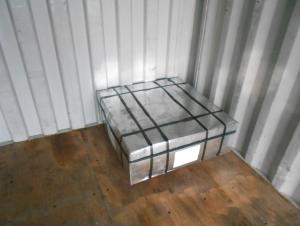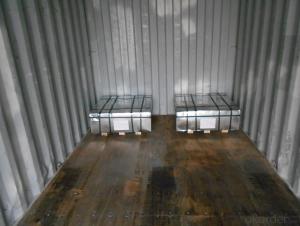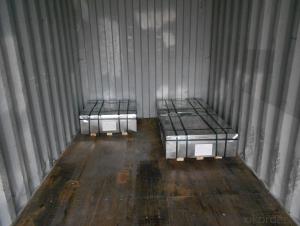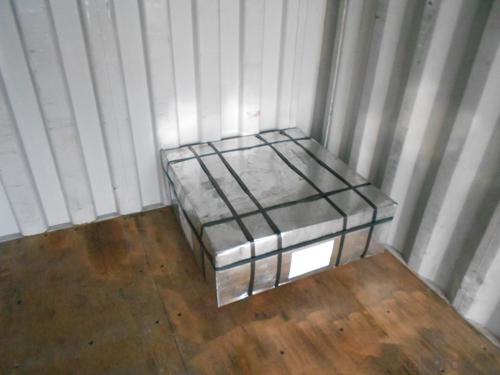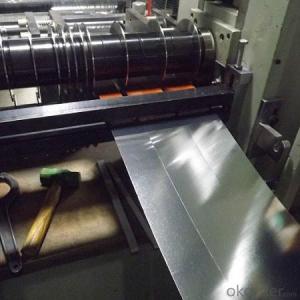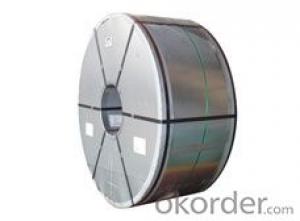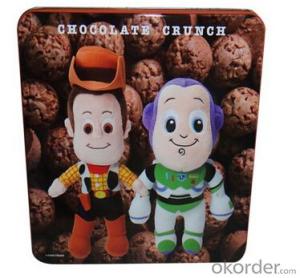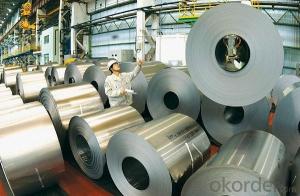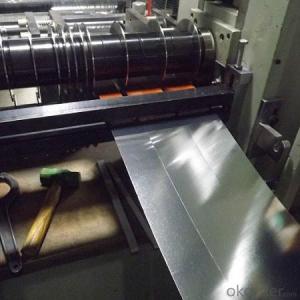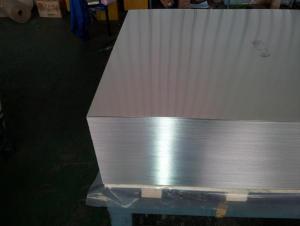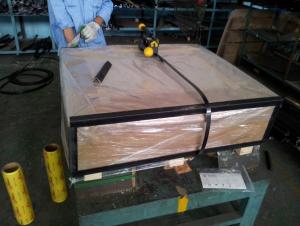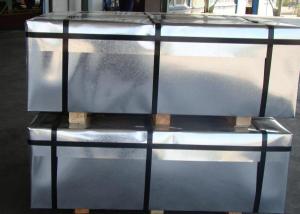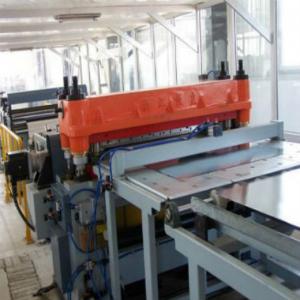TINPLATE of Prime Quality
- Loading Port:
- China Main Port
- Payment Terms:
- TT OR LC
- Min Order Qty:
- -
- Supply Capability:
- -
OKorder Service Pledge
OKorder Financial Service
You Might Also Like
Our Tinplates Specification:
Standard: ISO 11949 -1995, GB/T2520-2000,JIS G3303,ASTM A623, BS EN 10202
Material: MR,SPCC
Thickness:0.15mm - 0.50mm
Width: 600mm -1150mm
Temper: T1-T5; DR8 - DR10;
Annealing: BA & CA
Passivation:311
Oil: DOS
Surface: Finish,bright,stone,matte,silver
Packing:
1、For sheets: plastic or waterproof paper, metallic cover and angles, steel strips,wooden pallet.
2、For Coils: plastic or waterproof paper,plastic protect plate,steel strips.
Coil Inner Diameter: 508mm
Weight: 6-10 tons/coil
Application: widely used in every kinds of packing cans,such as tea packaging cans, painting packaging cans, chemical packaging cans and dry food packaging cans; and also mechanical parts
Both Prime and Second Quality Are Available!!!
- Q: Can tinplate packaging be used for toy products?
- Yes, tinplate packaging can be used for toy products. Tinplate is a durable and versatile material that can be shaped into various sizes and designs, making it suitable for packaging toys. It provides an attractive and protective packaging solution, ensuring the safety and preservation of toy products.
- Q: How does tinplate contribute to the containment of chemical substances?
- Tinplate contributes to the containment of chemical substances primarily through its excellent corrosion resistance properties. The tin coating on the steel substrate provides a protective barrier that prevents the chemical substances from coming into direct contact with the metal, thereby reducing the risk of chemical reactions and contamination. Additionally, tinplate's tight and secure seal ensures that no leakage or seepage of the contained substances occurs, further enhancing the containment.
- Q: How is tinplate affected by exposure to oxygen?
- Tinplate is generally not affected by exposure to oxygen, as it forms a protective layer of tin oxide on its surface that prevents further oxidation.
- Q: What are the different ways to display tinplate containers?
- There are several ways to display tinplate containers. They can be showcased on shelves or in glass display cases, hung on hooks or racks, arranged in creative formations or patterns, or even used as decorative centerpieces. Additionally, they can be incorporated into themed displays or grouped together by size, shape, or design to create an eye-catching presentation.
- Q: What is the average lifespan of tinplate packaging?
- The average lifespan of tinplate packaging can vary depending on various factors such as the storage conditions, usage patterns, and level of care. However, with proper maintenance and handling, tinplate packaging can typically last for several years or even longer.
- Q: How does tinplate packaging contribute to product ease of use?
- Tinplate packaging contributes to product ease of use by providing a sturdy and durable material that is easy to open, close, and handle. Its smooth surface allows for effortless stacking and storage, while its lightweight nature makes it convenient to carry. Additionally, tinplate packaging often incorporates user-friendly features such as easy-to-grip lids and pull-tabs, enhancing the overall user experience.
- Q: How is tinplate coated for signage?
- Tinplate for signage is typically coated through a process known as electroplating, where a thin layer of metal, such as tin or chromium, is deposited onto the surface of the tinplate. This coating not only enhances the visual appeal of the signage but also provides protection against corrosion and improves its durability.
- Q: Can tinplate be used for packaging electronic components?
- Yes, tinplate can be used for packaging electronic components. Tinplate is a material made from thin sheets of steel coated with a layer of tin, which provides excellent corrosion resistance and electrical conductivity. It is commonly used in the packaging industry for various applications, including packaging electronic components. The tin coating protects the components from moisture and other environmental factors, ensuring their safety and longevity. Additionally, tinplate offers good formability, making it suitable for creating customized packaging shapes to accommodate different electronic components.
- Q: How does tinplate affect the sound quality of musical instruments?
- Tinplate does not directly affect the sound quality of musical instruments. The sound quality primarily depends on the construction, materials, and design of the instrument itself, such as the type of wood used, the shape, and the craftsmanship. Tinplate may be used for aesthetic purposes or as a protective coating, but it does not significantly impact the sound produced by the instrument.
- Q: How does tinplate contribute to the circular economy in the steel industry?
- Tinplate plays a significant role in promoting the circular economy within the steel industry. Due to its exceptional recyclability, tinplate can be easily collected, sorted, and recycled into new products repeatedly without losing its properties. This allows for a closed-loop system where tinplate packaging is collected, recycled, and reintroduced into the market as new packaging, reducing the need for virgin materials and minimizing waste generation. By facilitating the reuse and recycling of tinplate, the steel industry can minimize resource depletion, reduce energy consumption, and decrease the environmental impact associated with production.
Send your message to us
TINPLATE of Prime Quality
- Loading Port:
- China Main Port
- Payment Terms:
- TT OR LC
- Min Order Qty:
- -
- Supply Capability:
- -
OKorder Service Pledge
OKorder Financial Service
Similar products
Hot products
Hot Searches
Related keywords
